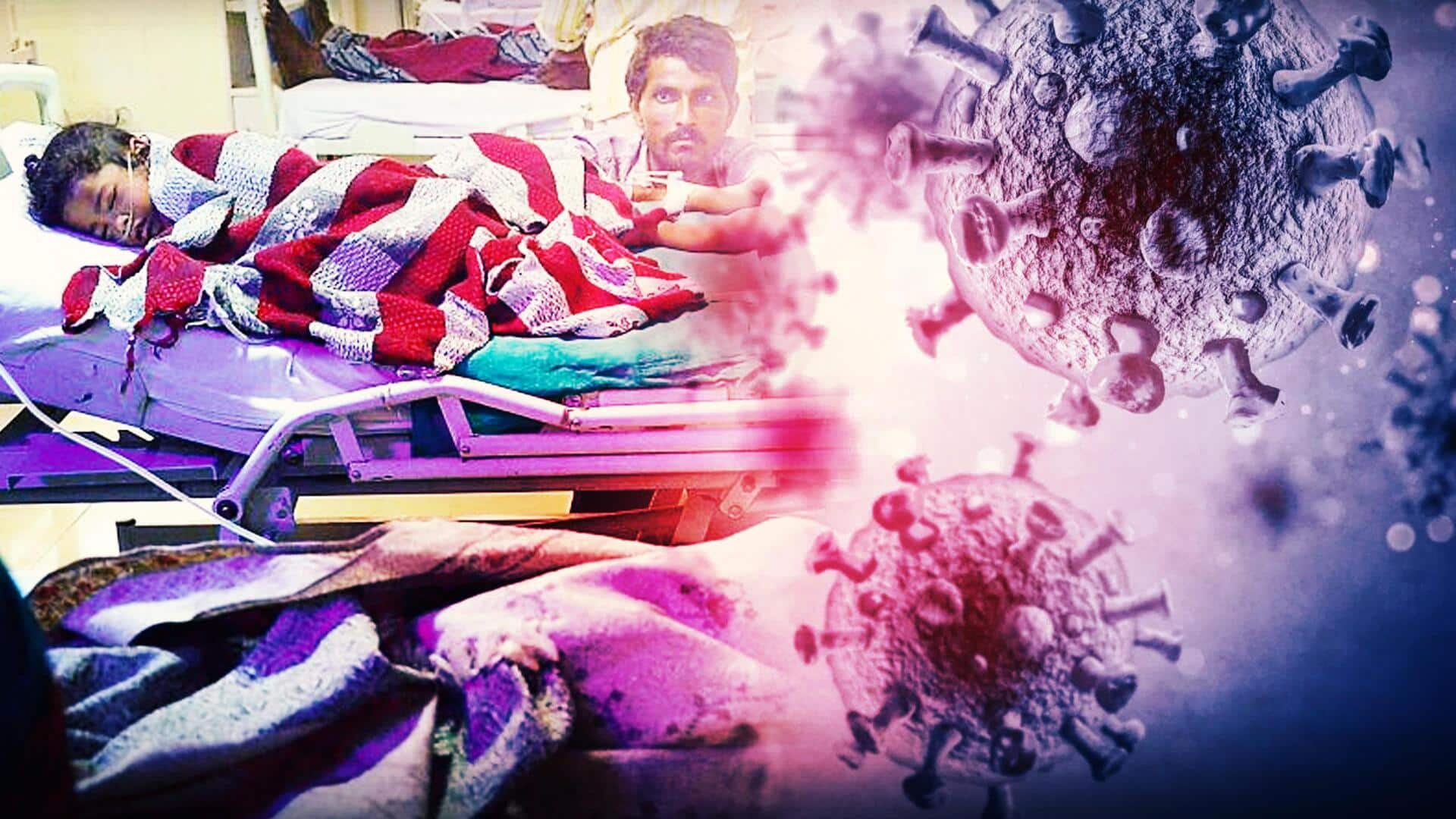
6 Gujarat children die of Chandipura virus: What is it
What's the story
The Gujarat government announced on Monday that six children have died from a suspected Chandipura virus (CHPV) infection since July 10. Health Minister Rushikesh Patel reported a total of 12 suspected cases from various districts in Gujarat, Rajasthan, and Madhya Pradesh. CHPV—a member of the Rhabdoviridae family which includes the rabies-causing lyssavirus—is primarily transmitted through sandflies and mosquitoes bites. The virus can cause encephalitis—inflammation of the brain's active tissues—once it reaches the central nervous system.
Disease progression
Symptoms, progression of Chandipura virus infection
Symptoms of the Chandipura virus infection initially resemble those of the flu, including acute onset of fever, body aches, and headache. The infection may then progress to altered sensorium or seizures and encephalitis. Other symptoms reported in retrospective studies from India include respiratory distress, bleeding tendencies, or anemia. The infection often progresses rapidly after encephalitis sets in, potentially leading to death within 24-48 hours of hospitalization. Children below 15 years are particularly susceptible to the virus.
Treatment challenges
No specific treatment for Chandipura virus yet
Currently, there is no specific antiretroviral therapy or vaccine available for the treatment of the Chandipura virus. Managing brain inflammation becomes crucial to prevent mortality. Disease progression can be rapid, with high fever in the morning potentially leading to kidney or liver damage by evening. The virus was first isolated in 1965 during a dengue/chikungunya outbreak investigation in Maharashtra. It has since caused significant outbreaks in states like Maharashtra, northern Gujarat and Andhra Pradesh.
Geographic spread
Chandipura virus endemic to central India
The Chandipura virus infection remains largely endemic to the central part of India—where the population of CHPV-spreading sandflies and mosquitoes is higher. According to reports, outbreaks often occur in rural, tribal and peripheral areas due to the prevalence of sandflies. There is also a seasonal aspect to the infection, with outbreaks reported more frequently when the sandfly population increases.
Disease management
Importance of early detection, prevention measures
Doctors have stressed the importance of early detection and treatment for managing Chandipura virus infections. They also recommend public health strategies such as the use of insect repellents, bed nets, and insecticides to control sandfly populations. Increased research is needed to better understand the virus's transmission dynamics and develop effective treatments and vaccines. One report said that sandflies have been found at higher heights than usual during surveillance, indicating that new outbreak centers are emerging.